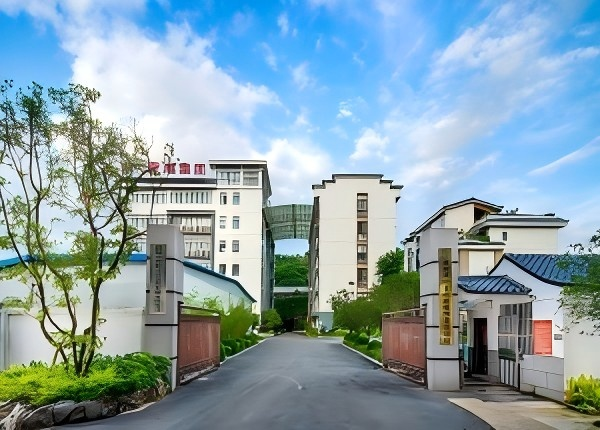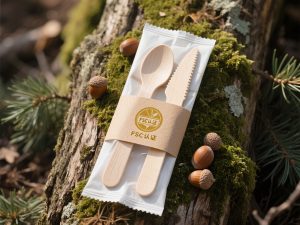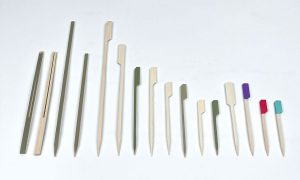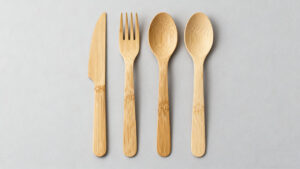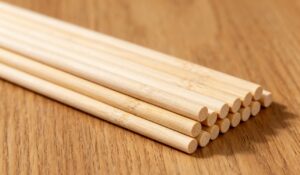Over 80 billion disposable wooden chopsticks are used annually worldwide - their convenience and affordability making them indispensable for Asian cuisine lovers.
Disposable wooden chopsticks remain the go-to choice for restaurants and takeout due to their cost-effectiveness (50% cheaper than reusable options), hygiene assurance, and elimination of washing costs or logistics.
 But as sustainability concerns grow, savvy buyers need to know how to source responsibly-made versions and understand their alternatives.
But as sustainability concerns grow, savvy buyers need to know how to source responsibly-made versions and understand their alternatives.
Where to Find Sustainable Disposable Wooden Chopstick Suppliers?
China dominates over 90% of global wooden chopstick production, but not all suppliers meet eco-standards - here's how to identify responsible manufacturers. Look for suppliers with FSC-certified plantations, water-based lacquering processes (instead of chemical coatings), and waste-reduction systems where wood scraps are recycled into biomass fuel or paper pulp.
Sustainable Supplier Evaluation Checklist
| Criteria | Eco-Friendly Standard | Red Flags |
|---|---|---|
| Wood Source | FSC/PEFC certified birch/aspen | Unverified rainforest timber |
| Processing | Steam sterilization only | Formaldehyde treatments |
| Packaging | Recycled paper sleeves | Plastic wrapping |
| Waste Recovery | 95%+ material utilization | No recycling program |
- Guilin, China - Cluster of FSC-certified factories with European export experience
- Northern Vietnam - Emerging producers using acacia fast-growth plantations
- Polish Manufacturers - EU-compliant producers for local European markets
What Certifications Should Disposable Wooden Chopstick Suppliers Have?
Lacking proper certifications can result in seized shipments - these are the must-have documents for compliant chopstick imports. Critical certifications include FSC Chain-of-Custody (sustainable forestry), FDA 21 CFR 175.300 (food-contact safety), and ISO 22000 (food safety management), along with non-formaldehyde declaration reports.
Certification Requirements by Market
| Market | Mandatory Certifications | Recommended Additional Certificates |
|---|---|---|
| USA | FDA, USDA Organic (if claimed) | BPI Compostable |
| EU | CE, REACH SVHC | Nordic Swan Eco-label |
| Japan | JAS, Japanses Agricultural Standard | SG Mark (Safety Goods) |
| Global | FSC/PEFC | Carbon Footprint Verification |
- Verify certificate numbers on issuing body websites
- Request recent third-party lab test reports for heavy metals
- Check fumigation treatment records for pest control compliance
How Do Disposable Wooden Chopsticks Compare to Bamboo Alternatives?
While bamboo grows faster, wood chopsticks still command 60% market share - here's the data-driven comparison for buyers. Wooden chopsticks offer better cost efficiency ($0.003-0.006/unit vs bamboo's $0.008-0.012), while bamboo provides superior durability (25% higher flexural strength) and slightly faster biodegradation (2 years vs wood's 3).
Material Comparison Matrix
| Property | Wooden | Bamboo | Winner |
|---|---|---|---|
| Unit Cost | $0.004 avg | $0.010 avg | Wood |
| Production Speed | 5000/min | 3000/min | Wood |
| Tensile Strength | 50 MPa | 65 MPa | Bamboo |
| Biodegradation | 3 years | 2 years | Bamboo |
| Heat Resistance | 90°C | 120°C | Bamboo |
| Customization | Easy printing | Laser engraving | Tie |
- Bamboo's natural silica content makes it more splinter-resistant
- Wood offers superior surface smoothness for comfortable use
- Bamboo's vertical grain provides better structural integrity


